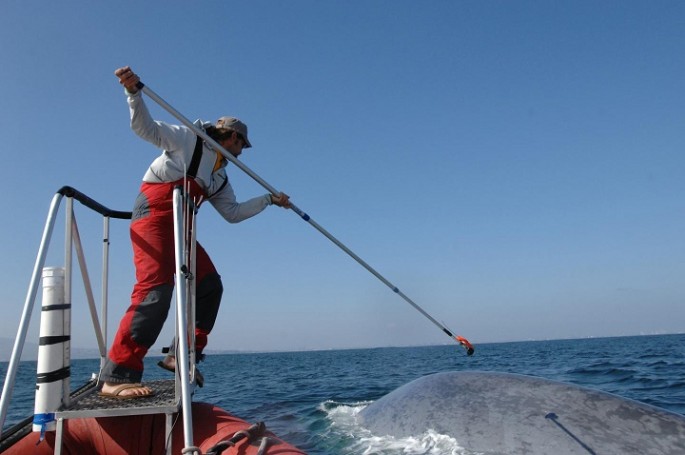The blue whale is considered to be the largest animal to ever live as scientists unravel the secret how these colossal marine mammals feed and forage food that has remained a mystery until this new study.
Blue whales are considered to be filter feeders where they use large plates in their mouths to filter krill or tiny crustaceans in the ocean. Upon feeding, the blue whales dive deeper into the ocean where they swim and swallow as much as 130 percent of their body weight. During feeding time, blue whales can devour as much as 4 tons of krill everyday.
However this new study reveals the unique eating habits of blue whales, where researchers observed them from the coast of California. Researchers discovered that the whales often discriminate when it comes to krill and they do not feed as often as they want to, but rather, they only feed when krill populations are high and the marine mammals also conserve oxygen when they dive deeper when krill is scarce.
According to research ecologist Elliott Hazen from the U.S. National Oceanic and Atmospheric Administration's Fisheries Science Center, the team discovered that the blue whales apparently possess complex strategies that involve conservation of oxygen when prey quality is low and intense foraging methods when prey quality is high.
Blue whales also explore and then conduct a thorough assessment of their environment first before they do take advantage of the quality of their prey that are now revealed in this study. This strategy also maximizes their use of energy in correlation with the amount of krill they consume.
Blue whales are migratory creatures that are found in many oceans all over the world, however they are listed as an endangered species due to whaling practices from the last century. To date, there are an estimated 10,000 blue whales that roam around the world's oceans where each can measure up to 30 meters long and weigh around 165 tons.
This new study is published on the journal, Science Advances.



























